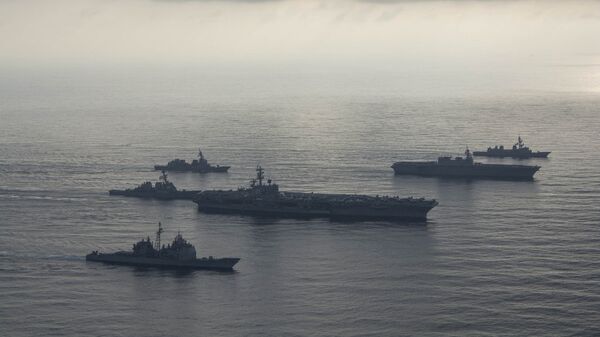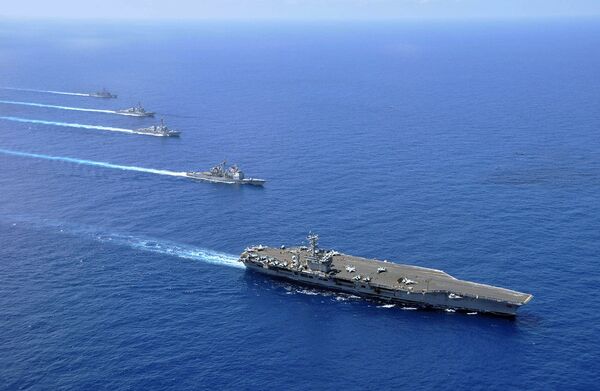A Chinese Weibo social media user with the handle @zhezhongzhihuizhang published a satellite image allegedly showing American aircraft carrier the USS Ronald Reagan surrounded by at least seven other, purportedly Chinese, warships on 24 September. The image, which later spread to other social media platforms, also suggested that the USS Ronald Reagan was alone when it was allegedly surrounded northeast of the Spratly Islands in the South China Sea, although aircraft carriers are usually accompanied by other warships.
USS Ronald Reagan aircraft carrier and some unidentified warships were seen sailing in the area north-east of Spratly Islands in the South China Sea on September 28. pic.twitter.com/eQNOBku8eV
— Duan Dang (@duandang) September 28, 2019
Spokeswoman for the US 7th Fleet refused to confirm whether the incident really took place, saying only that the carrier is "conducting routine operations". A spokesperson for the Chinese Defence Ministry neither confirmed nor denied that the US warship had been surrounded, but noted when responding to a question about their publication that the USS Ronald Reagan was sent to the region to "flex muscles and escalate regional militarisation".
"We are firmly opposed to that. We urge the US side to respect the security concerns of countries in the region and make positive contributions to the peace and stability in the South China Sea", the spokesperson said.
The carrier's voyage to the disputed waters of the South China Sea comes just weeks ahead of the celebration of the Chinese Communist Party's 70th anniversary. But such deployments have not been a rare occurrence recently.
The US, sometimes in cooperation with its allies, has been sending warships on so-called freedom of navigation operations, claiming to be protecting vital maritime routes, currently controlled by China, despite several other regional states claiming sovereignty over various islands in the South China Sea.
Beijing has repeatedly slammed these American operations as "provocations" and cautioned Washington against escalating the situation in the region with its "reckless" actions.
Brunei, the People's Republic of China (PRC), Taiwan, Indonesia, Malaysia, the Philippines, and Vietnam are staking their claims to parts of the South China Sea, which reportedly contains rich fossil fuel reserves and through which many important maritime routes pass. The majority of the area is controlled by Beijing, which has been increasing its military presence there, including by creating artificial islands and building military installations on them. China insists that all the deployments are purely defensive.




